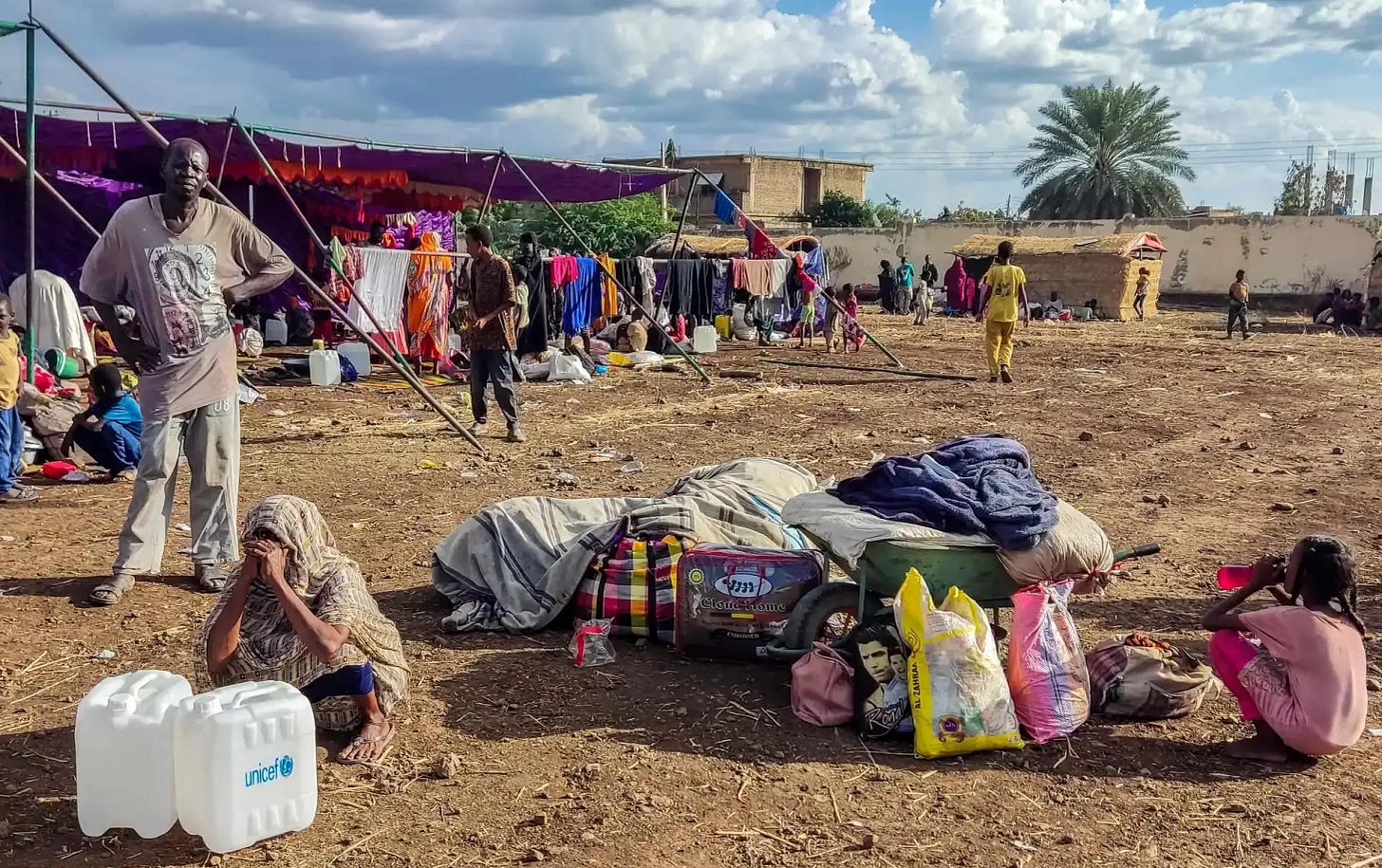A video clip published on Sunday, August 17, shows a member of the Rapid Support Forces (RSF) executing a civilian in cold blood after questioning him about the location of the army’s base commander in El Fasher and his tribal affiliation. The footage underscores that what is unfolding in the historic capital of Darfur, western Sudan, is not conventional warfare but the subjugation of entire communities through terror.
RSF fighters deliberately document their atrocities in El Fasher and broadcast them on social media, a calculated attempt to sow fear after sexual violence, looting, and forced displacement failed to achieve submission. The video sparked a wave of outrage, yet RSF loyalists defended the perpetrator, who later boasted of his willingness to kill 2,000 people.
Just a day earlier, RSF fighters opened fire on young men in the town of Shagra designated a safe corridor for civilians fleeing El Fasher accusing them of smuggling goods into the besieged city. Twelve civilians were killed in the attack, coinciding with an RSF bombardment of Abu Shouk camp north of El Fasher that left 30 displaced people dead.
A Record of Atrocities
The viral video is but a glimpse of RSF’s broader record of atrocities in El Fasher. The siege began in April 2024, followed by an assault in May that tightened the noose around the city. Unable to seize the city by force, the RSF launched a campaign of forced displacement, occupying the Golo reservoir the main water source for El Fasher and culminating in an assault on the vast Zamzam camp in April.
After taking control of Zamzam, 12 kilometers southwest of El Fasher, the RSF enforced a near-total blockade, intercepting even donkey caravans carrying food supplies. Its deployment of air-defense systems downed a military aircraft, forcing the army to abandon airdrops of aid.
The militia then dug a deep trench around El Fasher, leaving only a narrow escape route where civilians were interrogated about their tribal origins.
Identity as a Death Sentence
The crisis in El Fasher goes beyond siege and starvation it has descended into ethnic cleansing. Médecins Sans Frontières (MSF) has warned of mounting risks to the Zaghawa community, a backbone of the joint forces fighting alongside the army.
The self-defense groups drawn from Zaghawa villages have reinforced army lines under the oversight of Darfur’s regional governor, Minni Arko Minnawi.
The RSF has exploited the fact that most joint force fighters are Zaghawa as justification for systematic killings. Yet its record already includes the massacre of Masalit communities in West Darfur and mass killings in Al-Jazira state.
“None of us could leave El Fasher if we said we were Zaghawa,” a woman told MSF in a July 3, 2025 report on atrocities in Zamzam. A man explained further: “RSF fighters and their allies would ask about your tribe. If you answered ‘Zaghawa,’ they killed you on the spot.”
The killings, however, extend to other African tribes. In the viral video, the executed man identified as from the Berti tribe—yet that did not spare him.
Repeating Zamzam at Abu Shouk
Before storming Zamzam camp once home to more than half a million displaced people the RSF pounded it with drone strikes and heavy artillery. It is now repeating the same strategy at Abu Shouk camp, sheltering more than 190,000 people.
The incursion into Abu Shouk shuttered the Nevasha market the only functioning marketplace in El Fasher after other markets, including the livestock market, were destroyed by bombardment. Hospitals and health facilities have suffered the same fate.
In a grim twist, most of the displaced in Zamzam and Abu Shouk were originally driven from their homes during the Darfur war by Janjaweed militias the very precursors of today’s RSF.
The RSF has since transformed Zamzam into a military base, bringing in Colombian mercenaries after its fighters failed to capture El Fasher in months of battles.
With markets destroyed, aid blocked, and more than 845,000 residents trapped, most now survive on animal fodder made from peanut husks after oil extraction. Malnutrition has spread rapidly, with deaths from hunger already recorded.
The only health care lies 60 kilometers away in Tawila, but escaping the city is perilous amid RSF abuses and exorbitant transport costs. El Fasher is being systematically dismantled—its water sources, markets, health facilities, and humanity all under attack.
Why El Fasher Still Stands
The relentless assaults have torn apart El Fasher’s social fabric, leaving thousands of families without breadwinners. Women now shoulder the burden of providing for their families while facing the threat of sexual violence. Children are deprived of schooling, safety, and food.
Reports in outlets such as Sudan Tribune and Darfur24 describe daily horrors. The RSF is also detaining women at two sites, some forced into marriages with fighters, leading to cases of coerced pregnancy.
El Fasher has endured 231 ground assaults in just 18 months, yet its defenders remain unbroken. Analysts point to several reasons: the RSF lacks a support base inside the city; community kitchens known as takayas sustain the most vulnerable with diaspora funding; and waves of youth and women have joined the popular resistance.
The army has consolidated its presence in El Fasher, relocating commanders there after withdrawing from isolated garrisons elsewhere in Darfur. Its base equipped with an airfield and supplied since the 2003 Darfur war continues to provide arms and vehicles captured from RSF fighters.
El Fasher, however, may not withstand indefinitely without life-saving medicines and humanitarian relief. For the army, it is the last urban stronghold in Darfur. For the RSF, its capture would open the way to full control of the region and the desert routes beyond.
Today, El Fasher stands as a living witness to RSF brutality a city that has defied starvation, mass killings, rape, displacement, and bombardment. These crimes cannot be erased, no matter the outcome of the war.


